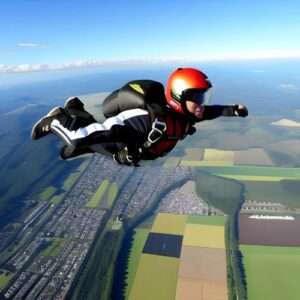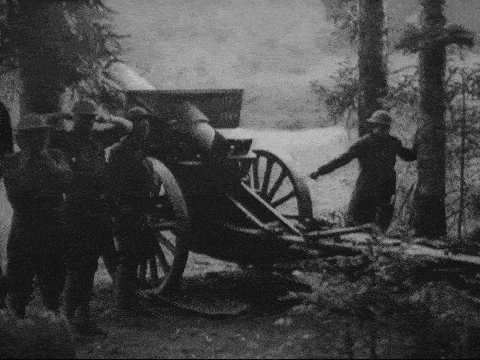Examples Of Free Fall Motion In Physics & Real Life

Examples Of Free Fall Motion In Physics
Here are the top 9 Examples Of Free fall motion In physics and in real life.
- Skydiver falling from an airplane.
- Apple falling from a tree.
- A person jumping off the diving board.
- Spacecraft re-entering atmosphere.
- Rock Sliding
- Falling raindrops from the sky.
- Paper airplane gliding downward.
- Bungee jumping
- Artillery Fire
Free fall motion examples in physics are common and can be seen in many daily life situations. This motion is defined as an object’s motion under the influence of gravity, and it is important to understand the various examples of free fall motion in physics.
In certain ideal situations, like a vacuum or when there is minimal air resistance, external forces are not significant, and the motion is mainly controlled by gravity.
In this blog post, we will explore 9 free fall motion examples in real life. All the examples given above are having a small amount of external force, along with gravity acting upon them.
But before you read any further, it might be a good idea to briefly understand free fall motion. It will help you to understand the examples better. If you are already familiar with the concept, you can skip it by clicking on the link below.
What Is Free Fall Motion In Physics?
In physics, free fall motion refers to the motion of an object that is only influenced by gravity. When an object is in free fall, it is accelerating under the force of gravity alone, with no other forces acting upon it. This means that the object is not experiencing any air resistance or other external forces that could affect its motion.
In the absence of other forces, like air resistance or friction, an object in free fall follows a parabolic or straight path downward, gaining speed as it falls.

For Example, a feather falling in a vacuum chamber is an example of true free fall. In the absence of air resistance, the feather would experience only the force of gravity, accelerating downward at a constant rate without any external forces.
9 Examples Of Free Fall Motion In Physics & Daily Life
I am sure that the concept of free fall motion is clear to you now. If not, you can check the reference provided at the end. Let us move on to 9 free fall motion examples in daily life.
Examples
-
Skydiver falling from an airplane.

To begin with, our first example of free fall motion is, when a skydiver jumps out of an airplane, they enter a state of free fall. In this state, the only significant force acting on the skydiver is gravity. Gravity pulls the skydiver downward, causing them to accelerate.
According to Newton’s laws of motion, the skydiver experiences a constant acceleration due to gravity, denoted as “g” and approximately equal to 9.8 meters per second squared (m/s²) near the surface of the Earth. This means that as the skydiver falls, their speed continuously increases. -
Apple falling from the tree.

When an apple falls from a tree, it experiences free fall motion dominated by the force of gravity. The apple starts at rest and accelerates downward due to gravity’s constant acceleration (approximately 9.8 m/s²).
Additionally, air resistance and other forces, apart from gravity, are having an impact on the apple. However, gravity is the only significant force acting on the apple, causing it to fall. -
A person jumping off the diving board.

When a person jumps off a diving board, they enter a state of free fall motion which is controlled by gravity. Initially, they have an upward velocity, but as soon as they leave the diving board, gravity becomes the only significant force acting on them.
However, other forces come into play. Air resistance opposes their motion. Friction between the person’s body and the air also affects their motion. Consequently, they experience free fall, descending due to gravity, until they hit the water or other surface. -
Spacecraft re-entering atmosphere.

When a spacecraft re-enters the atmosphere, it undergoes free fall motion influenced by gravity. As the spacecraft descends, it encounters increasing air resistance, opposing its motion. The combination of gravity and air resistance affects its trajectory and speed.
Moreover, the spacecraft reaches a point where the force of gravity is balanced by air resistance, resulting in a constant velocity known as terminal velocity. Despite the presence of air resistance, the spacecraft experiences free fall as it descends toward Earth under the influence of gravity. -
Rock Sliding
When a rock slides down a slope, it experiences free fall motion governed by gravity. The resistance encountered by a rock during its free fall will be:
a) Friction
b) Air Resistance
c) Rolling Resistance
d) Obstacles or any other irregularities.
Initially, the rock may have an initial velocity. As it descends, gravity acts as the only significant force, causing the rock to accelerate downward. Neglecting air resistance and assuming a smooth surface, the rock undergoes free fall motion, steadily acquiring speed as it moves downhill. -
Falling raindrops from the sky.

When raindrops fall from the sky, they undergo a free-fall motion governed by gravity. As they descend, gravity is the primary force acting on the raindrops, causing them to accelerate downward. In the absence of air resistance, raindrops fall with increasing speed, following a straight downward path.
However, once they encounter air resistance, it begins to oppose their motion, affecting their terminal velocity and modifying their descent. Despite the influence of air resistance, raindrops still experience free fall motion under the dominant force of gravity. -
Paper airplane gliding downward.

When a paper airplane glides downward, it follows the path set by gravity. Gravity pulls the airplane toward the ground, causing it to accelerate as it descends.
Without any strong forces pushing against it, the paper airplane falls freely, like any other object in free fall. -
Bungee Jumping

During bungee jumping, a person jumps from a height and experiences free fall motion. Gravity pulls the person downward, accelerating their descent. The bungee cord, attached to its body, stretches, creating a force that opposes gravity.
As a result, this force gradually brings the person to a stop, causing them to rebound upwards.
Now comes our last free-fall motion example in real life which is Artillery fire. -
Artillery Fire:

-
In military artillery operations, missiles such as shells or rockets are launched from cannons or artillery systems. As these projectiles are fired, they undergo free fall motion under the influence of gravity while moving toward the target.
In conclusion, based on the examples provided, it is important to note that most of them involve some degree of air resistance, which affects the free fall motion. Objects falling in the presence of air resistance do not experience true free fall because air resistance opposes the motion and can significantly impact their descent.
It is also necessary to note that in idealized cases of free falls, such as in a vacuum or negligible fluid interactions, these external forces may be negligible or absent, and the motion is primarily determined by the force of gravity.
References
-
Physics Classroom:
URL: Introduction To Free FallThis lesson focuses on the concept of free fall motion and provides an introduction to its principles.
-
Physics Classroom:
URL: Acceleration Due to Gravity
The provided link leads to a webpage from “The Physics Classroom” discussing the concept of the acceleration of gravity.
You have finished the complete article related to 9 examples of free fall motion in physics & in daily life. If you have any doubts or queries, feel free to comment below. We will respond as soon as possible.
Or Email Us At [email protected]
Articles Related To Projectile Motion
| Vertical Motion Examples | Projectile Motion Examples |
| Horizontal Projectile Motion Examples |
Articles Related To Acceleration:
| Negative Acceleration Examples |
Articles Related To Speed & Velocity:
| Average Speed Examples | Average Velocity Examples |
Any topic you want us to cover? Let us know.


